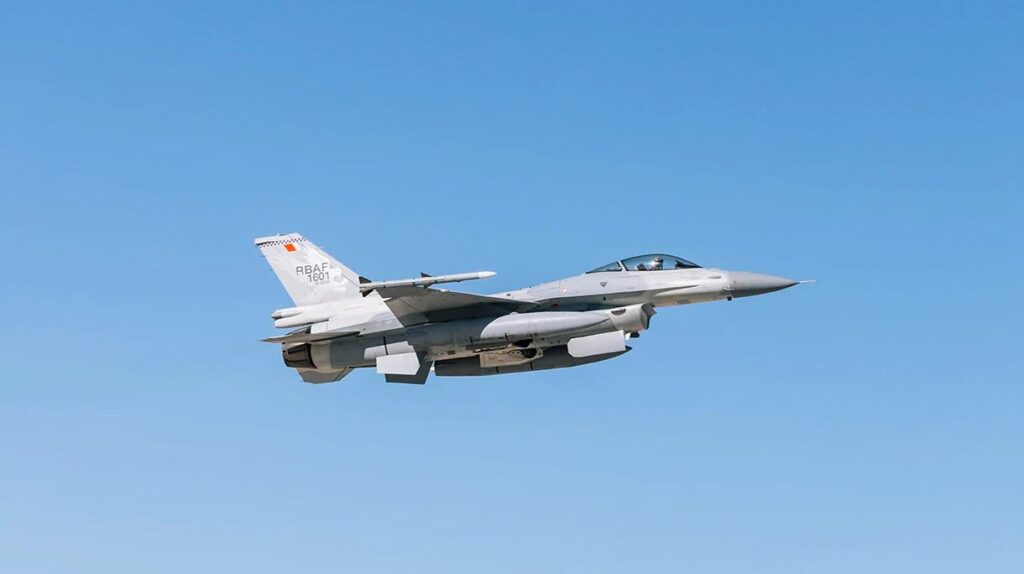
L3Harris Technologies’ Viper Shield had its first flight aboard a Royal Bahraini Air Force F-16C at Edwards AFB, Calif. (Lockheed Martin Photo)
The L3Harris Technologies AN/ALQ-254(V)1 Viper Shield all-digital electronic warfare suite recently had its first flight on a Royal Bahraini Air Force Block 70 F-16C assigned to the U.S. Air Force’s 412th Test Wing at Edwards AFB, Calif.
The wing is testing that aircraft as part of the foreign military sales process for Bahrain/Royal Bahraini Air Force.
In June 2018, the U.S. Air Force awarded Lockheed Martin a $1.1 billion FMS contract to build 16 F-16 Block 70 fighters for the Royal Bahraini Air Force.
Bahrain is the first foreign nation to receive Block 70s.
The first Viper Shield flight at Edwards “included a series of risk reduction tests related to the mission computer and other avionic subsystems compatibility, as well as interoperability with the APG-83 active electronically scanned array (AESA) fire control radar,” L3Harris said on Tuesday.
Northrop Grumman builds the APG-83 AESA radar.
AESA features include beyond line of sight, longer range air-to-air and air-to-ground targeting of multiple targets, such as air defense radars and cruise/surface to air missiles, and all-weather, high-resolution, synthetic aperture radar (SAR) ground mapping for improved strike.
In September, L3Harris said that its site in Clifton, N.J., had begun building 166 Viper Shields for F-16s in six countries under a total Viper Shield backlog of $1 billion.
“The Viper Shield system combined with a Block 70 airframe creates a leap in capability compared to the traditional Block 50 Viper I grew up flying,” Air Force Maj. Anthony Pipe, an F-16 experimental test pilot, said on Tuesday in the L3Harris statement. “The EW advancements this system brings will ensure pilots flying these aircraft continue to make it home.”
For U.S. F-16s, however, the Air Force in March 2022 chose Northrop Grumman’s ultra-wideband architecture AN/ALQ-257 Integrated Viper Electronic Warfare Suite (IVEWS), but L3Harris has said that it believes Viper Shield could one day go on U.S. F-16s.
“Our building block approach to test hardware and software in labs, demonstrate functionality in dense radio frequency environments and validate the EW system on the ground prepared us for Viper Shield’s successful first flight,” Ed Zoiss, president of L3Harris Space and Airborne Systems, said on Tuesday in the company statement. “With this [Viper Shield first flight] milestone, we are ready to continue flight testing and deliver systems in late 2025 as Viper Shield is the only advanced EW solution that is funded and in active production for international F-16 partners.”
L3Harris said that Viper Shield “counters modern radar threats with immediate detection and advanced jamming responses to disrupt the adversary’s kill chain” and that, “unlike other EW system providers, Viper Shield will integrate across all F-16 Blocks with minimal modifications to the aircraft, and it is fully configurable with both the current Mission Modular Computer and the Next Generation Mission Computer.”
A version of this story originally appeared in affiliate publication Defense Daily.